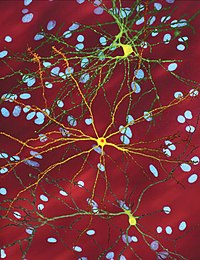
Photo from wikipedia
Abstract Integrative prioritisation promotes translational use of disease genetic findings in target discovery. I report ‘PiER’ (http://www.genetictargets.com/PiER), web-based facilities that support ab initio and real-time genetic target prioritisation through integrative… Click to show full abstract
Abstract Integrative prioritisation promotes translational use of disease genetic findings in target discovery. I report ‘PiER’ (http://www.genetictargets.com/PiER), web-based facilities that support ab initio and real-time genetic target prioritisation through integrative use of human disease genetics, functional genomics and protein interactions. By design, the PiER features two facilities: elementary and combinatory. The elementary facility is designed to perform specific tasks, including three online tools: eV2CG, utilising functional genomics to link disease-associated variants (particularly located at the non-coding genome) to core genes likely responsible for genetic associations in disease; eCG2PG, using knowledge of protein interactions to ‘network’ core genes and additional peripheral genes, producing a ranked list of core and peripheral genes; and eCrosstalk, exploiting the information of pathway-derived interactions to identify highly-ranked genes mediating crosstalk between molecular pathways. Each of elementary tasks giving results is sequentially piped to the next one. By chaining together elementary tasks, the combinatory facility automates genetics-led and network-based integrative prioritisation for genetic targets at the gene level (cTGene) and at the crosstalk level (cTCrosstalk). Together with a tutorial-like booklet describing instructions on how to use, the PiER facilities meet multi-tasking needs to accelerate computational translational medicine that leverages human disease genetics and genomics for early-stage target discovery and drug repurposing.
Journal Title: Nucleic Acids Research
Year Published: 2022
Link to full text (if available)
Share on Social Media: Sign Up to like & get
recommendations!